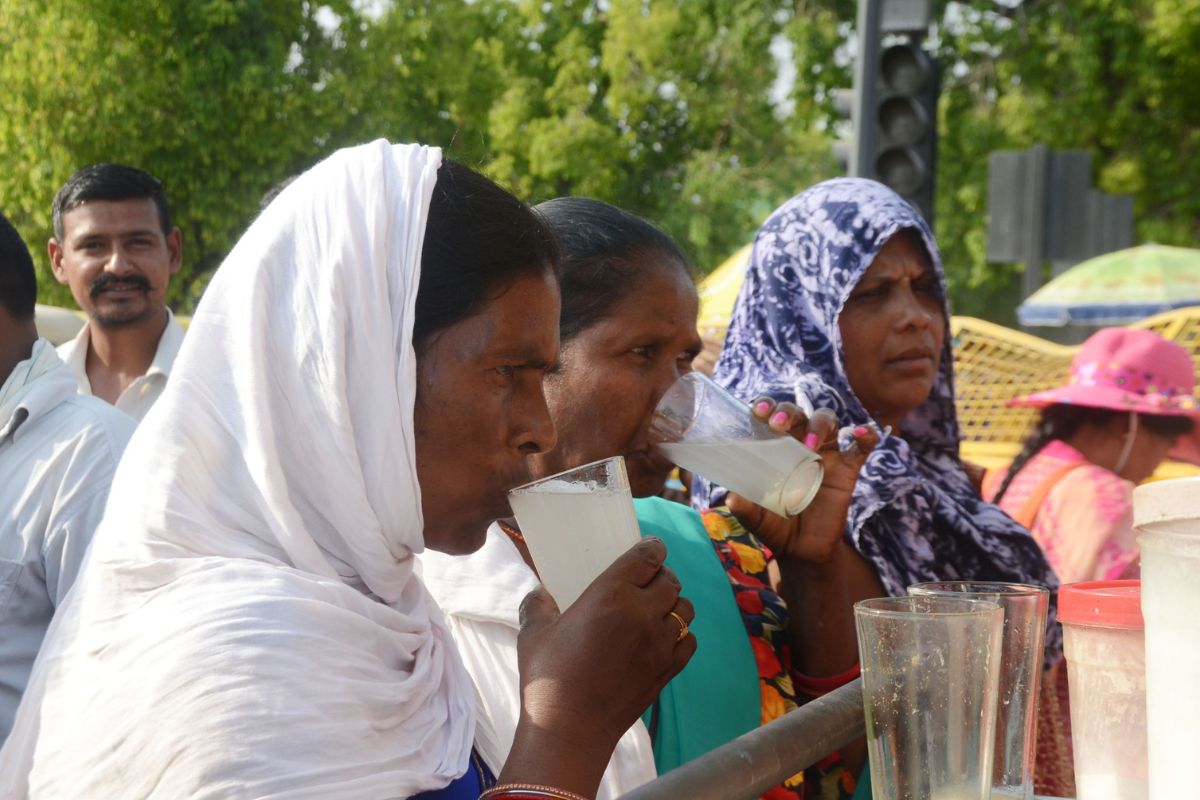As the summer sets in, suddenly temperatures around the world begin soaring punctuated by heat waves. Rising global temperatures due to climate change have only exacerbated the situation, leading to more intense and frequent heat waves.
What could be a tougher summer than usual started to sway the entire nation with the Meteorological Department issuing an orange alert for dangerously high temperatures in three states, West Bengal, Bihar, and Andhra Pradesh. It also warned that the heat wave conditions are likely in parts of four other states, Sikkim, Jharkhand, Odisha, and Uttar Pradesh.
Advertisement
Recently, 13 people died while attending a public event in Maharashtra.
Heat waves are the periods of abnormally hot and humid weather that last for days or weeks. These events have become increasingly common in recent years due to climate change, and their impact on human health and the environment is significant. In this article, we will explore the causes of heat waves, their effects on our lives, and how we can protect ourselves from their harmful effects.
“When the winds blow from the eastern side or from the direction of Bay of Bengal then there is some clouding at times which bring down temperatures over the eastern states. But hot, dry winds from the northwest are blowing over east India, which has comparatively higher humidity levels due to their location. So, people in the eastern states need to take heat prevention measures adequately,” said M Mohapatra, director general, IMD.
“Temperatures are very high over east India but humidity is still relatively low compared to June and July and because winds are from the northwest direction. Still the relative humidity levels we are seeing can also lead to discomfort and heat stress. They can be severe or fatal when winds approaching from the east and similar temperatures prevail,” said Mahesh Palawat, vice president, climate and meteorology at Skymet Weather.
One of the primary causes of increasing heat during summers is climate change. The Earth’s average temperature has been steadily increasing over the past few decades due to the release of greenhouse gases, such as carbon dioxide and methane, into the atmosphere. The burning of fossil fuels for transportation and energy generation, deforestation, and industrial activities are some of the significant contributors to greenhouse gas emissions.
The effects of increasing heat during summers are widespread and significant. Heatwaves can cause severe health problems, particularly for vulnerable populations such as the elderly, children, and those with pre-existing health conditions. Heat exhaustion, heat stroke, dehydration, and respiratory issues are common health concerns during a heatwave. In addition, increasing heat can also lead to reduced crop yields and water shortages, resulting in economic losses.
Experts also noted that this year’s weather is developing in an unsettlingly typical fashion; the shifts are significant, just as they were in 2022, when a large portion of the nation missed spring and transitioned almost directly from winter to summer.
Heat waves can have a significant impact on human health, particularly on vulnerable populations such as the elderly, young children, and those with chronic illnesses. The most common health risks associated with heat waves are dehydration, heat exhaustion, and heat stroke. Dehydration occurs when the body loses too much water and electrolytes, which can lead to dizziness, confusion, and even unconsciousness. Heat exhaustion is a more severe condition that can cause nausea, headaches, and fatigue. Heat stroke is the most serious heat-related illness and can be life-threatening. It occurs when the body’s core temperature rises above 104°F, and the body’s internal systems begin to shut down. Heat waves can also have a significant impact on the environment. They can lead to drought conditions, which can have a ripple effect on ecosystems, agriculture, and water supplies. Drought can cause soil erosion, reduce crop yields, and lead to wildfires. Heat waves can also contribute to air pollution, as increased heat and sunlight can lead to the formation of ground-level ozone. Ground-level ozone can cause respiratory problems, especially for those with pre-existing respiratory conditions.
To mitigate the impacts of increasing heat during summers, it is crucial to take collective action to reduce greenhouse gas emissions. Governments, businesses, and individuals can all contribute to this effort. The Odisha Government has declared that schools will remain closed till 20 April amid the heatwaves. Businesses can adopt sustainable practices and invest in renewable energy sources. Individuals can reduce their carbon footprint by using public transportation, walking, or biking instead of driving, reducing energy consumption in their homes, and choosing to buy from environmentally responsible companies.
IMD has advised a variety of preventive measures, including drinking enough water (even if you’re not thirsty), ORS (oral rehydration solutions or electrolyte replenishments), or comparable home-made drinks to stay hydrated.









